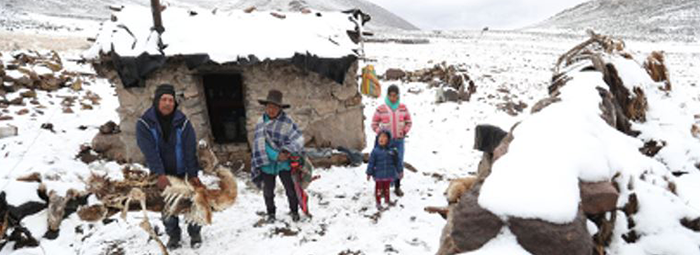
©2022 This excerpt taken from the article of the same name which appeared in ASHRAE Journal, vol. 65, no. 1, January 2023.
About the Authors
Julio C. Guerrero, Ph.D., is the founder and CEO of Cambridge Research and Technology, LLC., Cambridge, Mass.; William M. Worek, Ph.D., is a professor at Texas A&M University-Kingsville.
This article describes a system built in Perú, the CAT system, that could serve as a model for a sustainable energy solution for affordable off-grid residential heating in rural areas across the world. The system is based on a thermal energy solution for off-grid house heating in economically deprived areas without using photovoltaic (PV) cells, windmills, firewood or batteries.
Background
The CAT system addresses a worldwide significant challenge: areas exist where people live off-grid without access to any sources of thermal energy, and thousands die every year because they lack access to enough thermal energy to heat themselves, their homes and their animals during winter. Further, in some of these areas, people do not and cannot have access to energy generated from windmills or PV systems. Some of those areas are in the Peruvian Andes, where many people live 4000 m (13,123 ft) or higher than sea level. In Perú, at least 600 children die each year1,2 because of exposure to low temperatures during the winter. Temperatures can fluctuate between −20°C and –10°C (–4°F and 14°F) on the coldest nights and between −5°C and 0°C (23°F and 32°F) on nights that are less cold.
The way local Peruvian governments have tried to help for many years is by giving people blankets. However, when outside temperatures reach the lows mentioned above, inside-the-home temperatures quickly match the temperatures outside, especially at night. (See “Why Do Inside Temperatures Match Outside Temperatures?” on page 38.) These houses lack proper thermal insulation in their walls, ceilings and floors and also lack internal sources of thermal energy. These factors debilitate children and the elderly quickly. Low temperatures cause respiratory illnesses among children, contributing to childhood deaths. Even in developed nations, people die due to freezing weather. In the U.S., for example, deaths caused by cold temperatures have been documented for decades3 and will likely worsen in the coming decades due to extreme temperatures driven by climate change.
What happens when you surround a person with a blanket is similar to the physics of the flow of thermal energy from inside to outside a room. There are two temperatures, the one inside and the one outside the person, and the thermal energy that flows from the person to the surrounding environment is proportional to the ratio of the differential temperatures to the thermal resistance of the blanket. No matter what, after a certain point, if no thermal energy is provided to the person or the room they are in, there is a moment in which the temperature of the person will start decreasing. If that loss of thermal energy is not compensated for, the person will be subject to adverse health effects. This is the reason so many children die during the winter in these areas. We believe that this is an engineering challenge, and it is the duty of engineers to find a solution.
Given these challenges, in 2018 we began investigating how thermal energy could be collected, stored and transferred to these houses. We were inspired to create a sustainable home heating system based on low-cost simple and available materials versus more expensive technical components ideal for using the good radiation of the Andean region (700 W/m2 [65 W/ft2]) and storing the thermal energy in rocks. This system can be built with inexpensive materials, used in significantly isolated areas and be constructed and assembled on-site.
Read the Full Article
ASHRAE Members have free access to the full-text PDF of this article as well as the complete ASHRAE Journal archives back to 1997 in the Free Member Access Area.
Non-members can purchase features from the ASHRAE Bookstore. Or, Join ASHRAE!
Return to Featured Article Excerpts
Return to ASHRAE Journal Featured Article Excerpts